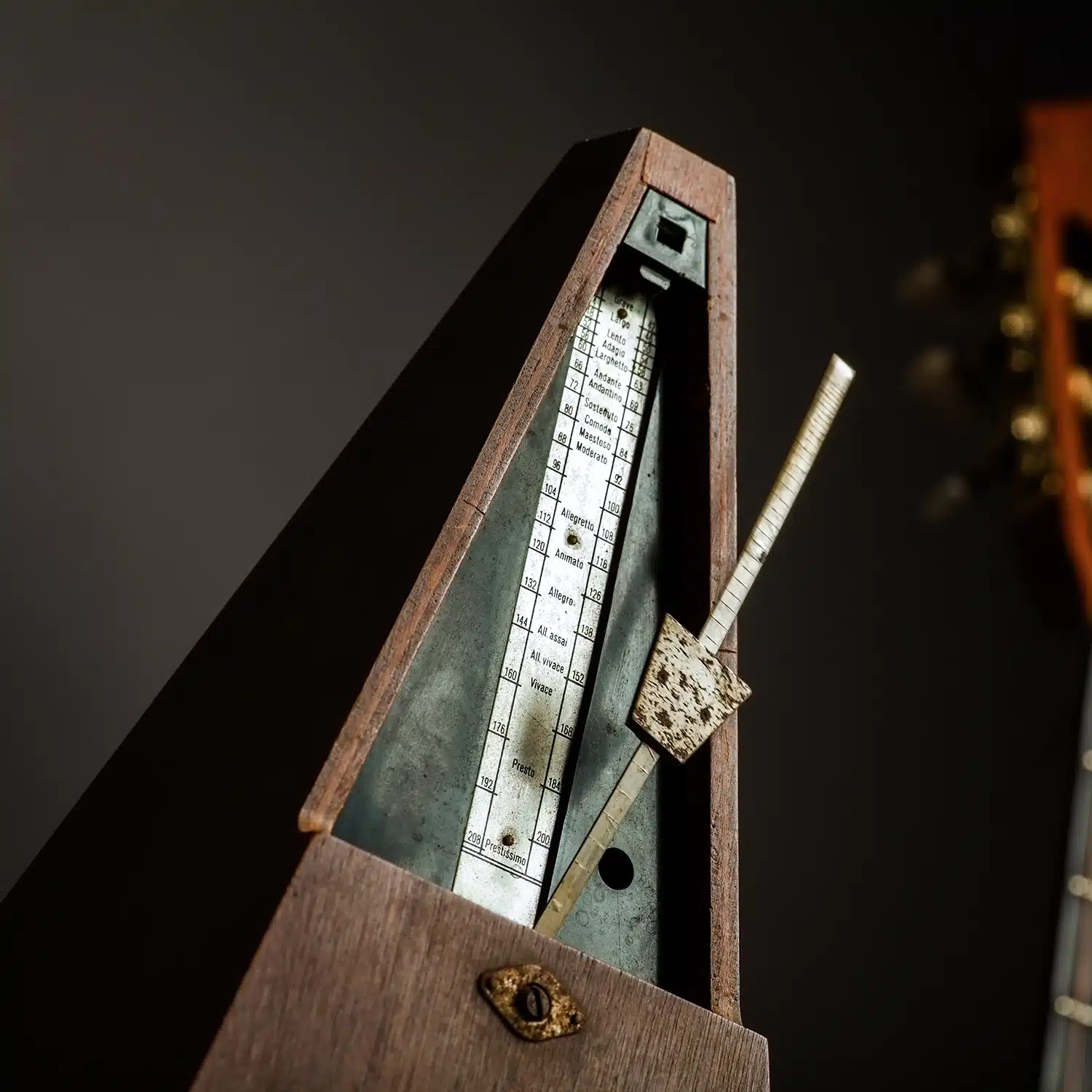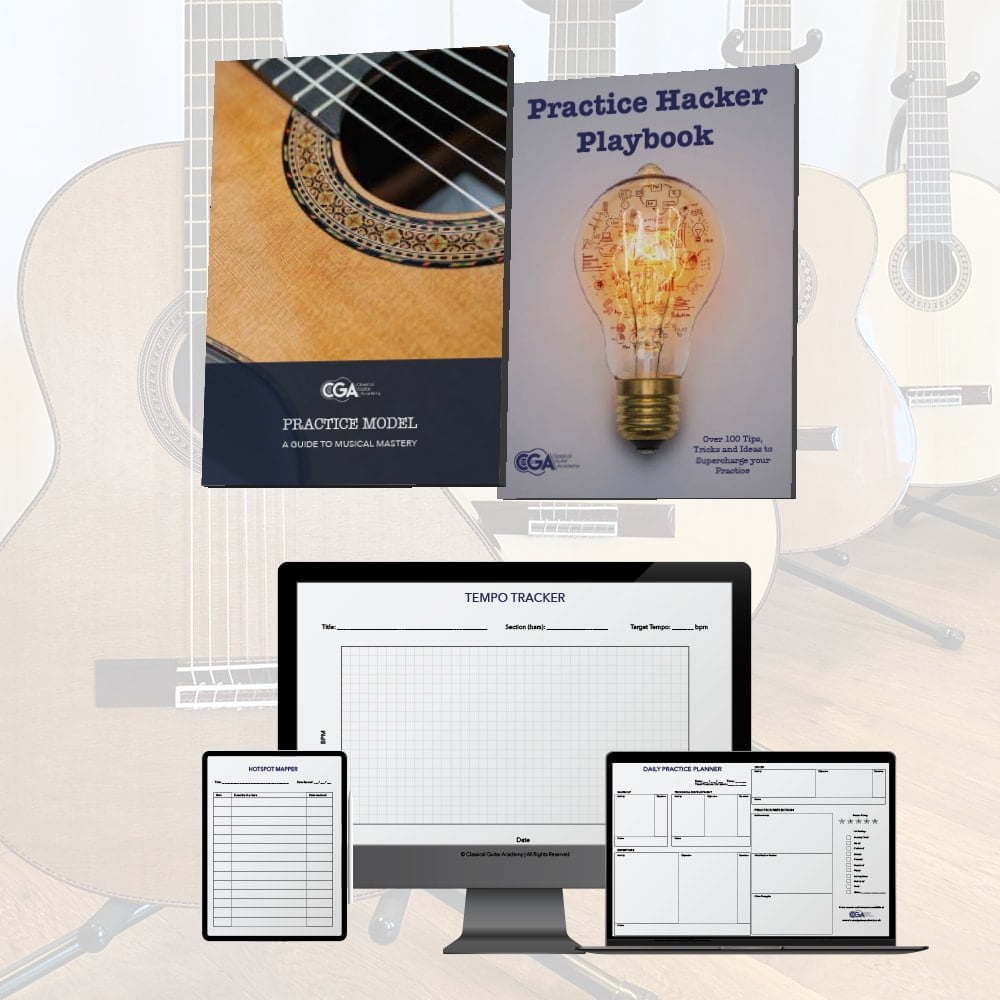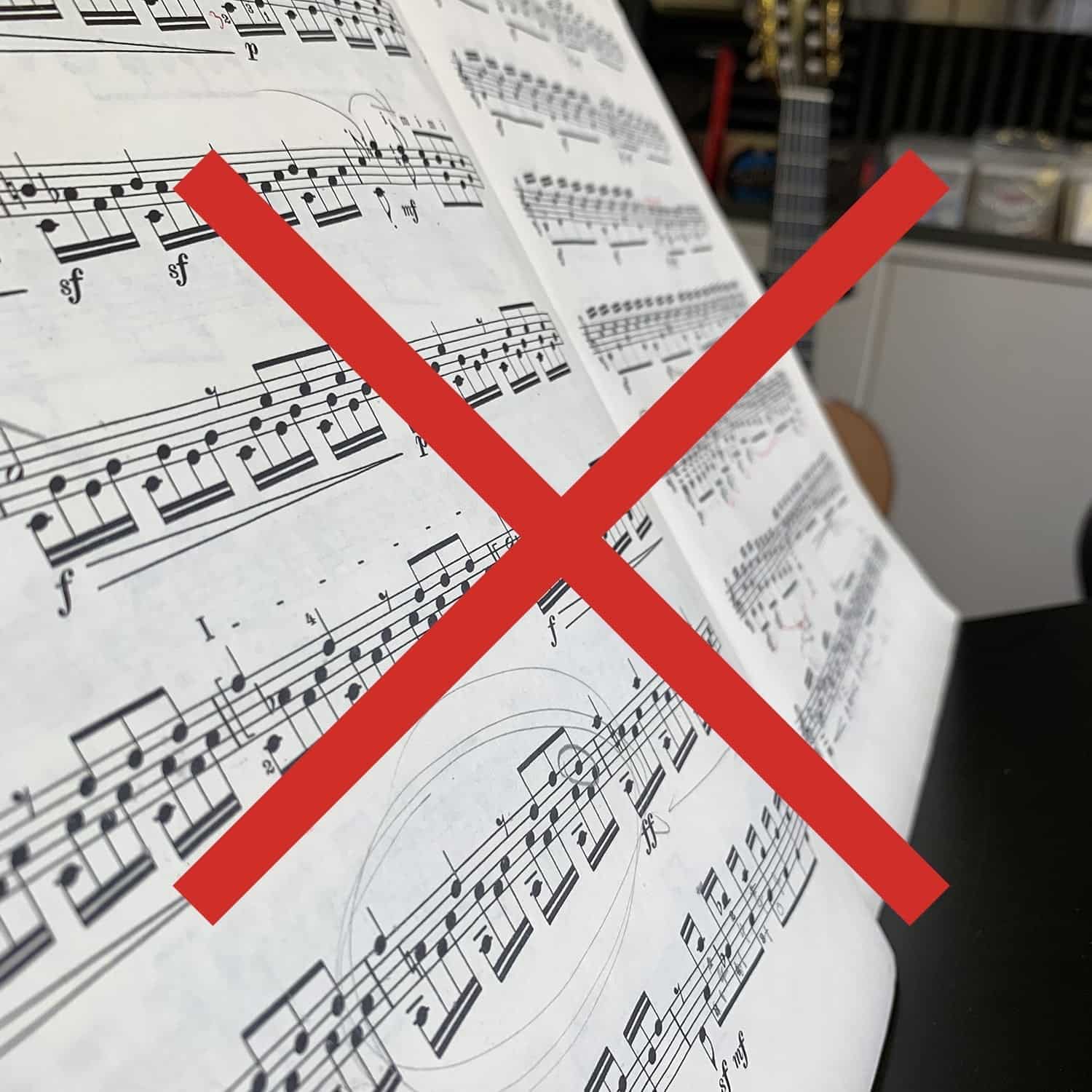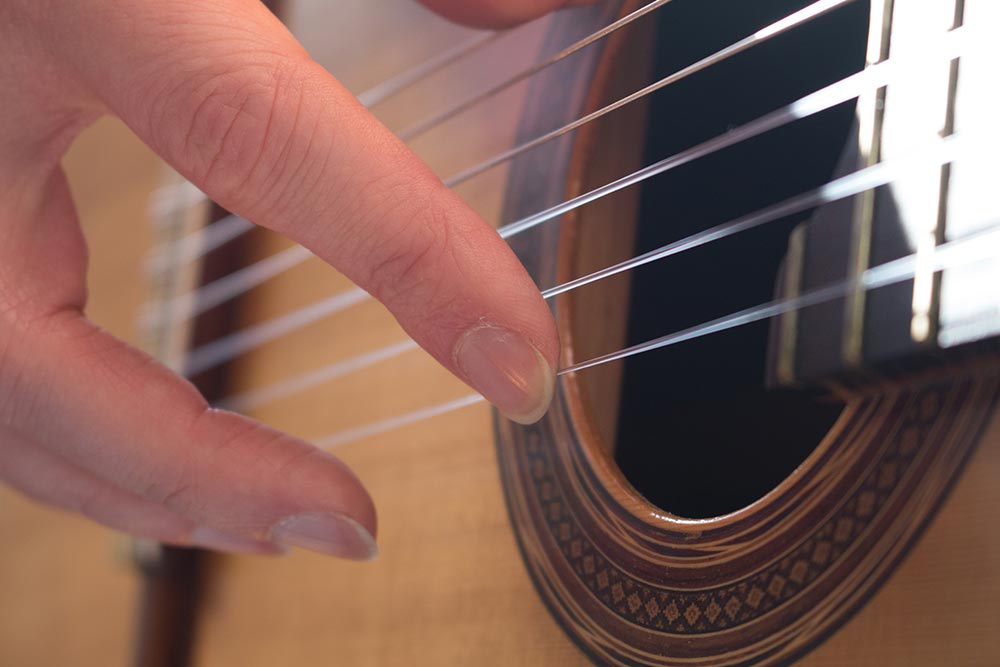How To Play with Tirando Technique (Free Stroke)
This lesson will give you an overview of the tirando technique. It will look at the specific position and movements required to establish a good tirando technique.
If you are new to the guitar, I strongly urge you to read this article on posture before continuing with this lesson. There are some important concepts discussed in that lesson which will help lay the foundations for this one.
I would also recommend finding a good classical guitar teacher in your local area to help get you started. The basic positions and movements for tirando are important, so it’s worth investing the time and money in good instruction. It will pay off long term.
This article is aimed at right handed guitarists, who will be using their right hands to play the strings. If you are left handed, simply substitute the word ‘right’ for ‘left’ in this article.
What is ‘Tirando’?
Tirando is one of two main fingerstyle methods of playing the classical guitar. It is often called free stroke, as this describes the movement of the fingers as they play the strings (‘freely’ into the hand, rather than ‘resting’ on the adjacent string after playing). It is best used in situations where notes are required to ‘ring on’ as others are played. Tirando is also good for playing two strings at once. This is because the movement does not involve resting or dampening any of the other strings after the note has been played.
The other major right hand technique is called ‘Apoyando’ (aka ‘Rest Stroke’). You can find a lesson on apoyando technique here.
Position
For the position of the arm and wrist, please see this article on posture.
Knuckles
For the tirando technique, it is best practice to keep your knuckles (MCP joint) hovering approximately over the string you wish to play. This means that when it comes to playing the string, the finger will travel towards the palm of the hand unobstructed and will not contact other strings.

Space
When playing tirando, it is good to keep lots of space underneath the hand for the fingers to move into. If the hand is too close to the strings, the fingers will need to adjust their movement. This can result in them performing a less optimal stroke, introducing too much ‘bounce’ into the hand.

Technique
Move from the Knuckles
The main movement of the finger should come from the knuckle joint (MCP joint). This should be the driving force behind the movement. The other joints in the finger (the PIP and DIP joints) should be relatively relaxed, using just enough energy to help them push through the string. This combination of movements from all 3 joints of the finger should produce a very controlled stroke.
The hand itself should remain as still as possible. If the hand is still, the fingers will remain in the correct place (hovering above the string they want to play). If the hand moves, it drags the fingers with it and moves them out of position. This can result in less accuracy.
Play into the Space
When pushing through the strings, you should aim to push freely into the space underneath the hand without touching any other strings. This is the premise of the tirando, or ‘free stroke’, technique.
As an exercise to develop your tirando technique, try pushing the finger all the way underneath the hand until it touches the palm. To do this you will need to fully engage the knuckle joint, which is good practice.
When playing a piece of music it is not advisable to make such big movements, but as an exercise this will help to develop the movement from the knuckles.

Before

After
Elbow and Shoulder
To begin with, keep the wrist completely straight. Imagine drawing a straight line between the tip of your elbow and your middle two knuckle joints (m and a fingers). When you push through the string and into the palm, try finishing with your finger pointing towards your elbow.
If you’ve positioned yourself as described in this lesson, you will end up pushing through the string at an angle of approximately 45 degrees. This typically helps to produce a thick and rounded tone.
Playing ‘towards the shoulder’ typically results in a brighter, clearer tone. This tone can be useful too so it’s worth taking the time to experiment with both. It should be noted that, if you’ve set up your arm as described in this lesson, playing towards the shoulder typically introduces a slight bend of the wrist which can inhibit the movement of the fingers and should be minimised where possible to avoid injury in the long run.

Playing Towards the Elbow

Playing Towards the Shoulder
Play and Return/Relax
Once you’ve played a note, the finger should return back to it’s original position. Once returned, it should feel relaxed and ready to play the next note. If you don’t get used to returning back into position quickly, the finger may not be available when you need to use it to play another note.
Alternate
When playing notes with the right hand, it is good practice to alternate fingers. This helps to share the workload and create more legato melodies. Classical guitarists typically use 3 fingers plus the thumb.
A simple exercise is to play the open E string using every combination of these fingers. Practice alternating using the following combinations:
I hope you’ve found this lesson on how to use the Tirando (Free Stroke) technique useful. If you have any questions please feel free to leave a comment and I’ll reply as soon as possible.















Playing with free stroke, my annular finger is so weak if used with the middle. But an a-m-i-m combination works fine. Strange – does it happen with someone else too? For picado, I’m fine :-)
Good Morning Ed. I need you help once more. So while I was trying to play a piece yesterday I noticed on the music sheet a vertical wavy line (arpeggio sign) before the notes: E (2nd fret – 4th string), G# (1st fret – 3rd string), B (2nd string open), E (1st string open). Below the arpeggio sign and the notes (E-G#-B-E) it was written the term “sforzando”. In that case do I have to use all 4 fingers (thumb-index-middle-ring finger) to execute properly the arpeggio or do I have to play it using just the thumb because of the sforzando?
Hi Kostas,
If the notes are to be arpeggiated, you can use your fingers (pima) and “roll” the chord (playing one note after the other), or you can strum through each note with your thumb. Sforzando simply means to play with more force, how you achieve this (fingers or thumb) is up to you.
Thank you very much!!!
Hi Ed, amazing helpful article here. I’m new to classical guitar, I’ve played electric and some acoustic for a number of years but have just started to learn classical. I have a question, when playing a section of notes with my thumb, what are my fingers doing ? ie are the resting on the strings or do I support my hand with my little finger on the body ? Any help would be great thank you
Hi Tyler,
I’d recommend keeping your fingers ‘hovering’ above the treble strings. It’s likely that you will need to use these again at some point in the piece of music so having them in a ‘ready’ position is really useful.
Resting your little finger on the body can pull your hand out of a more optimal playing position, so even though this may feel comfortable, it can be detrimental to your playing long term.
All the best,
Ed